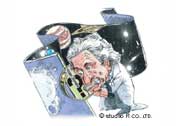2017.1.19
【General things】
None
【Reports】
・Simulation study on impact of GEM geometry for gas gain uniformity ->archive
https://arxiv.org/abs/1701.05421
(by T.Ogawa from SOKENDAI)
・Analysis of result of transmission with correction at beam test
lctpc2017.01.19shojia.pdf
(by A.Shoji from Iwate Univ.)
・Progress of readout electronics cooling simlation for next TPC prototype
(by D.Toda from Saga Univ.)
【Discussions】
None
【Comments from Matsuda-san on simulation】
> Concerning to your nice simulation work together with Aoki san on the
> thick GEM, this is just the confirmation of what I wanted to discuss in the
> last two meeting (today = 26 January = and last week) .
>
> (1) To understand the origin of the higher (or high) micro discharge rate
> of our thick GEM, may be you could show us how the max. charge densities
> calculated inside the GEM holes can be compared to the breakdown voltage of
> the T2K gas.
>
> (2) To see if the thick GEM fabricated of the film produced by the present
> method (i.e, with the current non-uniformity of the local thickness of the
> insulator) might really be usable at ILC only by making the GEM hole
> diameter larger, I would like to know how large the GEM hole have to be,
> say, for the 3 (4)% non-uniformity of the current insulator thickness.
>
> (3) I would like to know if there might be any influenece on the position
> resolution to use the larger GEM holes for our 100micron thick GEM.
>
> (4) As for the ion feed back ratio, probably we need your results for the
> two layers GEM system (for a given gas amplification factor).
>
> Best regards,
> Takeshi
